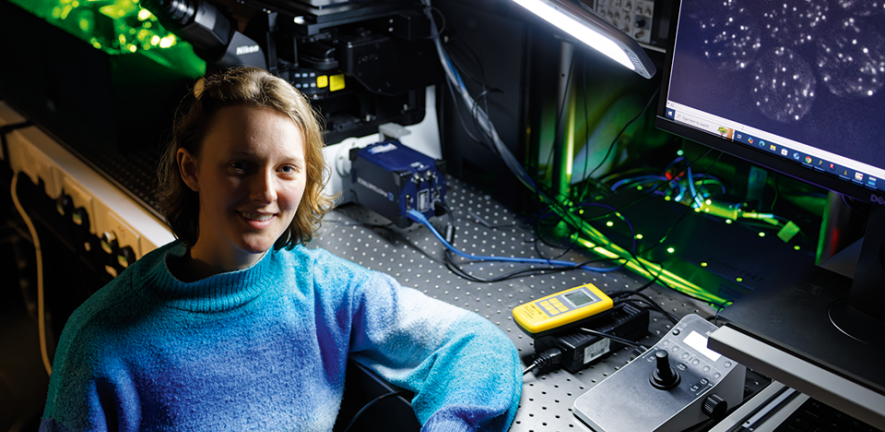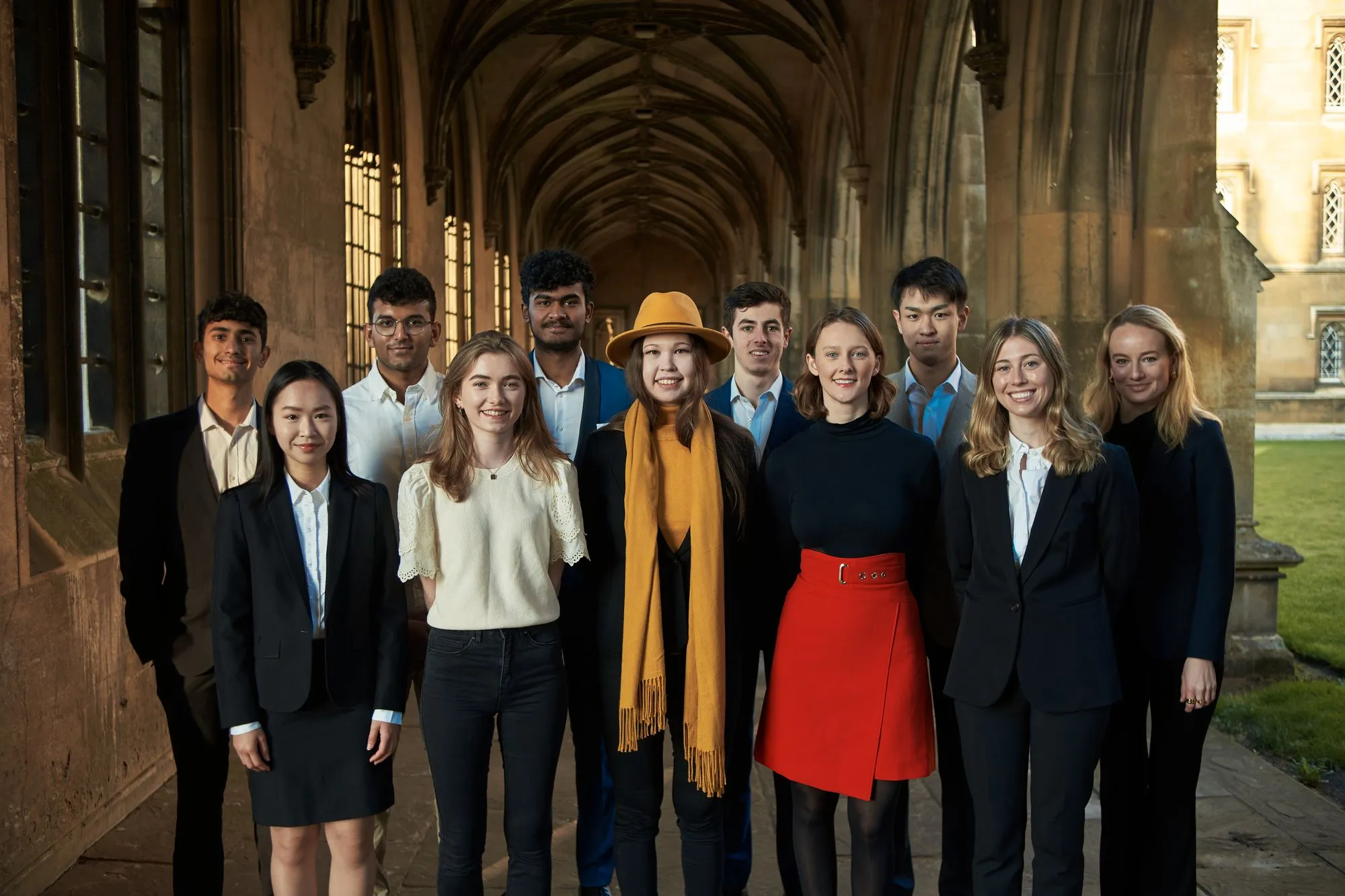
Alongside her research, she led entrepreneurial initiatives within St John’s College inspiring and mentoring founders. Now, she applies her technical and strategic expertise as a consultant, supporting digital transformation in the public sector.
Exploring the Interface: Microscopy and Materials Science
Olivia’s PhD research sat at the intersection of fluorescence microscopy and materials science, a space where imaging technology meets the challenge of understanding complex materials. While fluorescence microscopy has long been used in biological applications, Olivia’s focus was on applying and adapting these techniques to study hydrated materials. In particular, polymer networks and gels which have significant potential in drug delivery and biomedical applications.
Her work involved both the development of advanced imaging techniques and the synthesis of novel fluorescent dyes to better visualise and analyse material structures at the molecular level.
This dual approach – combining optics and materials science – meant that Olivia had to work across disciplines. She became adept at manipulating light and microscopy hardware, as well as understanding the chemistry and physics of the materials she was imaging. By working at this interface, she improved the way researchers visualise and quantify molecular interactions within these materials, providing insights that could directly impact their design and application – an understanding that has not before now, been achieved.
Advancing from 2D to 3D Imaging: A Breakthrough in Depth and Precision
One of the key advancements in Olivia’s research was moving from traditional 2D fluorescence microscopy to a more advanced 3D-imaging system. Conventional fluorescence microscopy captures images in a single focal plane, which can be limiting when studying materials with complex internal structures or tracking the movement of molecules over time. Olivia addressed this challenge by modifying a standard widefield fluorescence microscope, integrating custom optics to convert it
into a Fourier Light Field Microscope (FLFM).
By incorporating a custom microlens array into the optical path, Olivia’s setup was able to capture multiple perspectives of a fluorescent sample simultaneously, allowing for volumetric imaging without the need for mechanical scanning. This innovation meant that, instead of acquiring images one plane at a time, a large section of the 3D structure of a sample could be reconstructed from a single acquisition. The result was a significant improvement in both depth and precision – offering up to a 32-fold increase in imaging depth compared to traditional 2D methods, as well as maintaining nanometer-scale localisation accuracy.

Olivia Dovernor holding a hexagonal array microscopy lens.
The benefits of her approach extend beyond structural understanding. Because the system allowed for continuous tracking of fluorescent molecules over extended timeframes, Olivia’s research demonstrated its unique value in studying diffusion processes –
key to understanding how small molecules move through polymer networks.
“This will be particularly important in the context of drug delivery, where the controlled release and movement of pharmaceutical compounds within complex gel-like materials is crucial to their effectiveness.” Her findings introduce a different level of sensitivity, offering a new way to observe molecular interactions in real-time within water-based materials. There is a lot of potential with this enhanced piece of equipment to guide the development of more effective materials by simultaneously coupling microscopic 3D imaging with macroscopic rheology.
Through her PhD, Olivia advanced the technical capabilities available to soft-matter researchers and demonstrated the power of cross-disciplinary research in solving complex scientific challenges. She shared her time between the Melville Laboratory for Polymer Synthesis, directed by her co-supervisor Prof. Oren Scherman and the Lee Lab with her other supervisor Prof. Steven Lee. “I achieved many firsts during my studies which has been the exciting thing of pushing boundaries by combining two separate fields.”
Olivia received great feedback during her viva, which she “thoroughly enjoyed, it was such a lovely end to my four years in Chem!” She has since transitioned to working in public sector consulting, supporting digital transformation in the public sector.
College Entrepreneurship

Johnian Entrepreneurs Club, Olivia is front row, fourth from left. Courtesy St John's College.
Olivia has been involved in business and entrepreneurship since before her PhD.
“My interest in business grew when I won a pitching competition for Geovation Scotland in 2021, after which, I received close mentorship from professionals in the business and technology world including from Microsoft.”
She also got involved in college entrepreneurship at St John’s College and has helped regrow the community after Covid, designing a programme of events during her time as president from 2022. “It has taken a few years to establish a strong vision in St John’s hence why I am still the president now in 2025, but I am just about to hand over The Johnian Entrepreneurs Club’s presidency this year to the next very capable generation! Having grown the community in college to over 100 people from about five, I’m very proud of what my committee and I have achieved.”
“My involvement in entrepreneurship has ‘made’ Cambridge for me and is something I will be actively involved in and a member of for a long time. I believe that extracurriculars made a difference in getting my role now and helped tremendously when in hard PhD-related moments.”
Vision for the Future
Olivia reflects that: “I experienced challenges in both my PhD and business environments that I learnt to overcome and generate quality products. I also discovered where my interest lies and hence, where to go next in my career. Now I am applying these varied skills in a real-time and real-world application – a very interesting and technical role which I’m excited to see where it takes me”.
This article was originally published in Chem@Cam magazine Issue 70.

